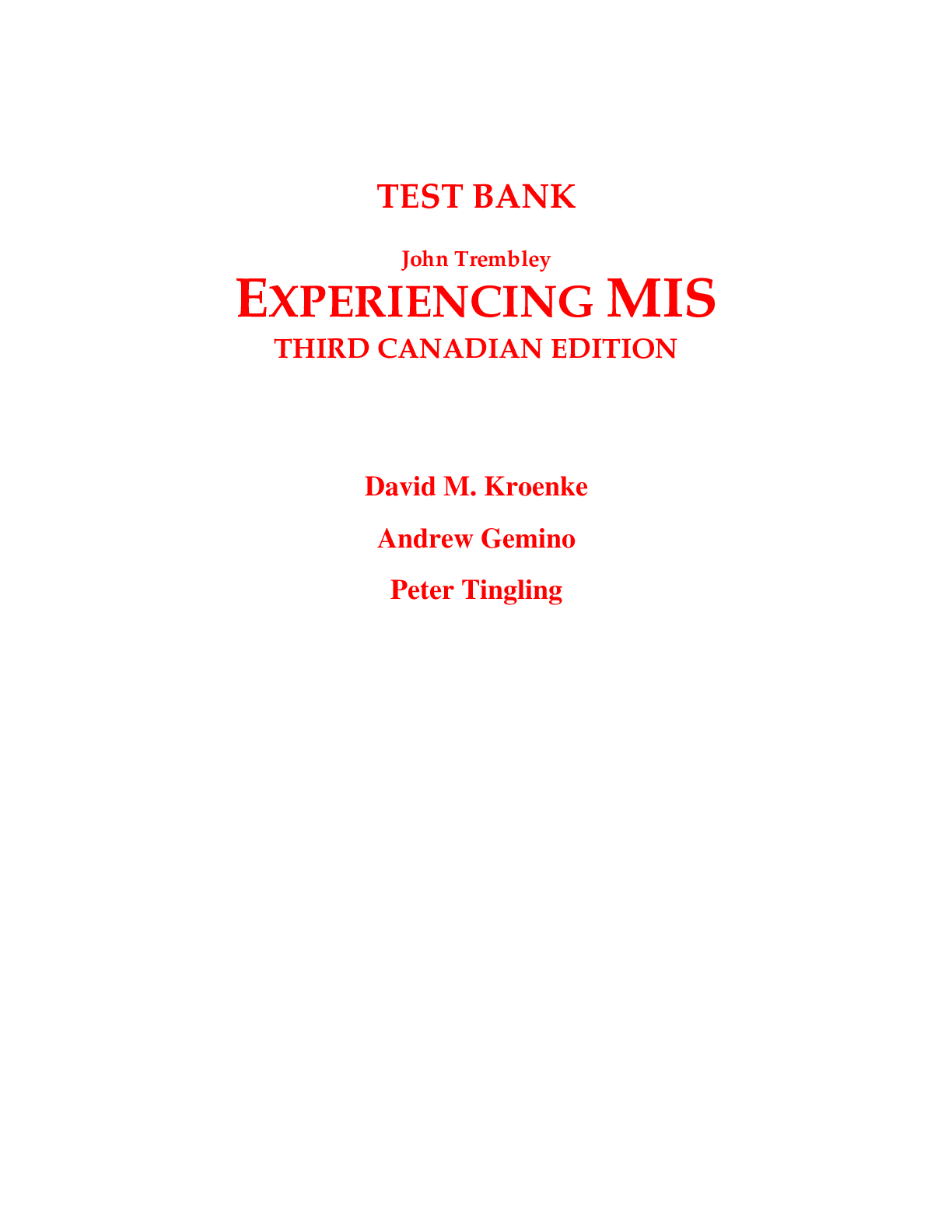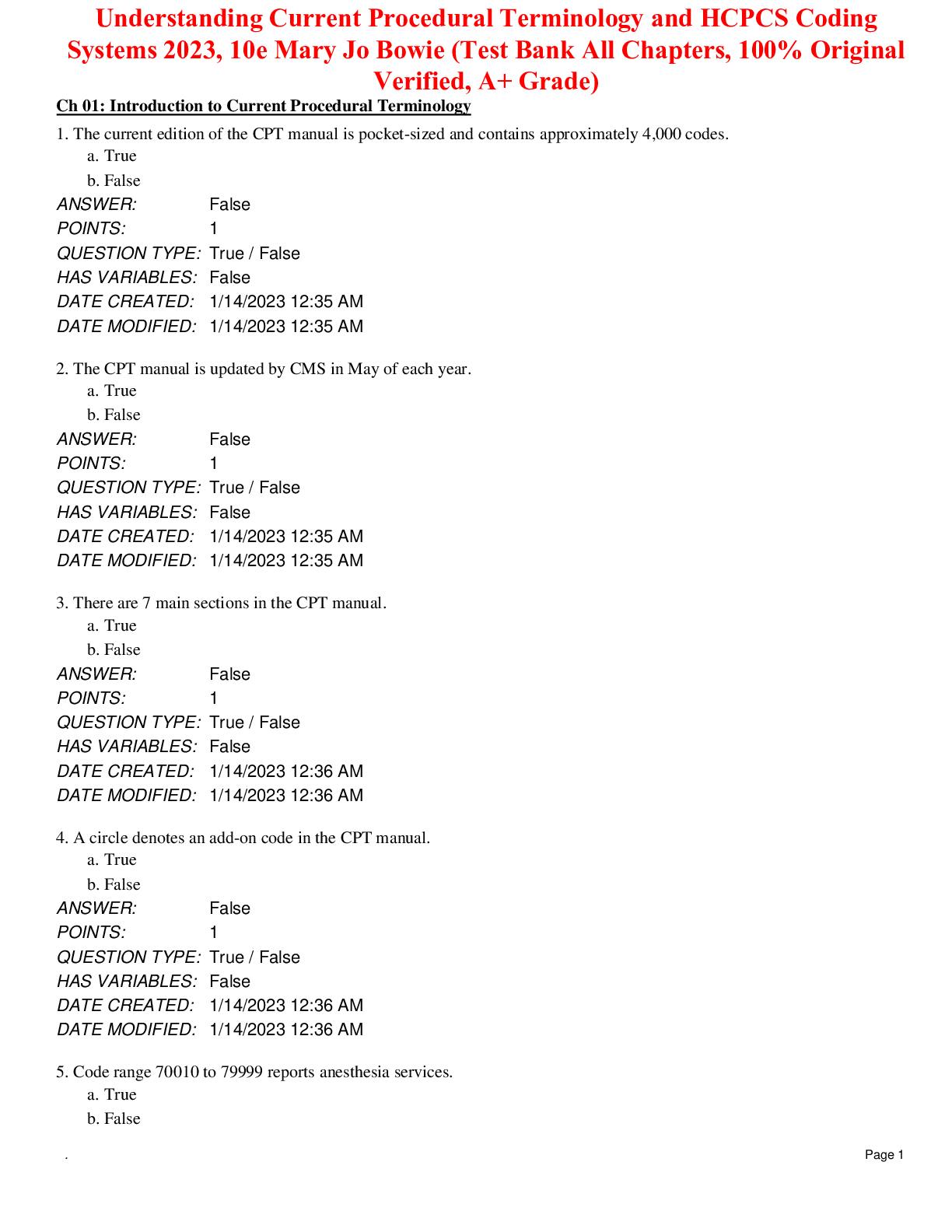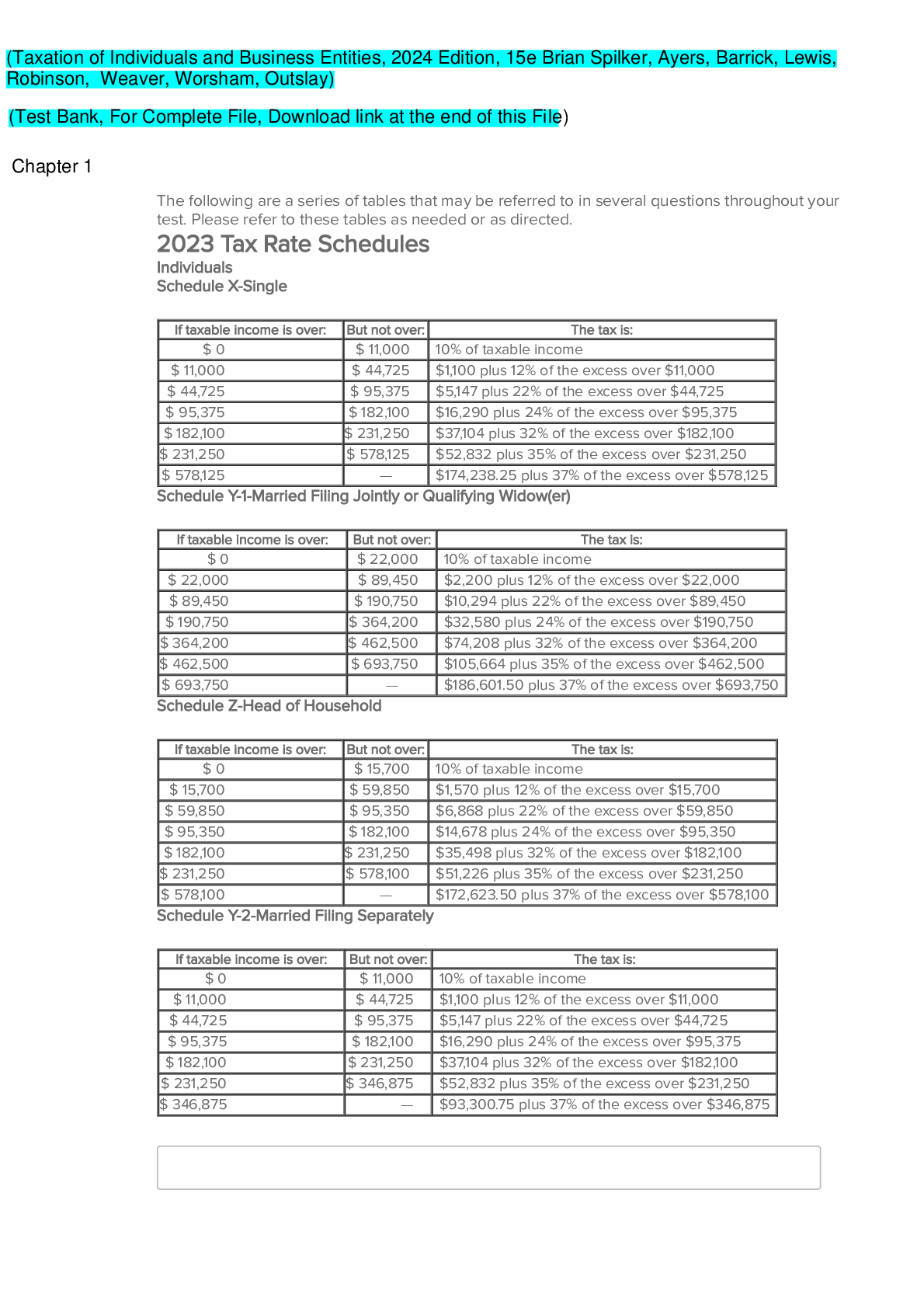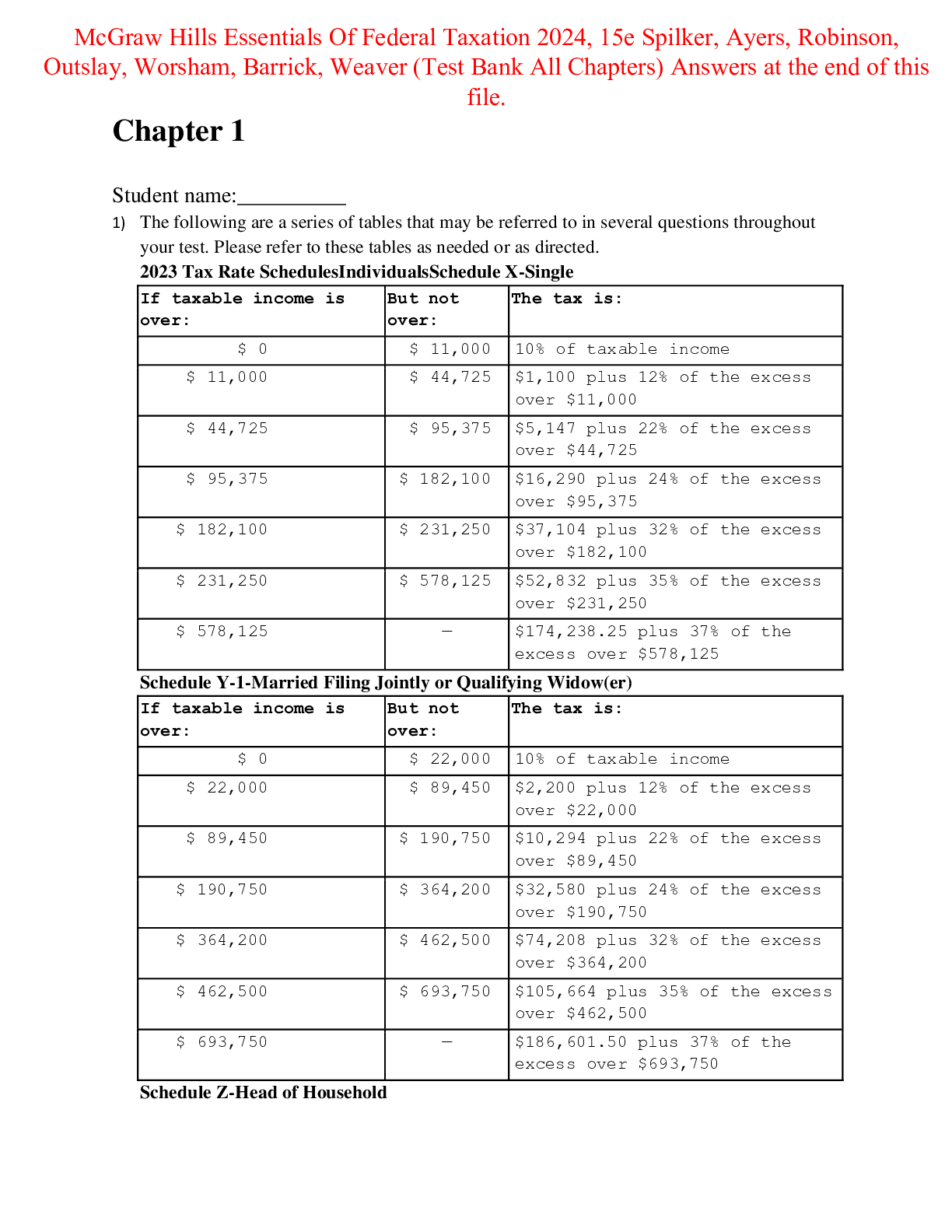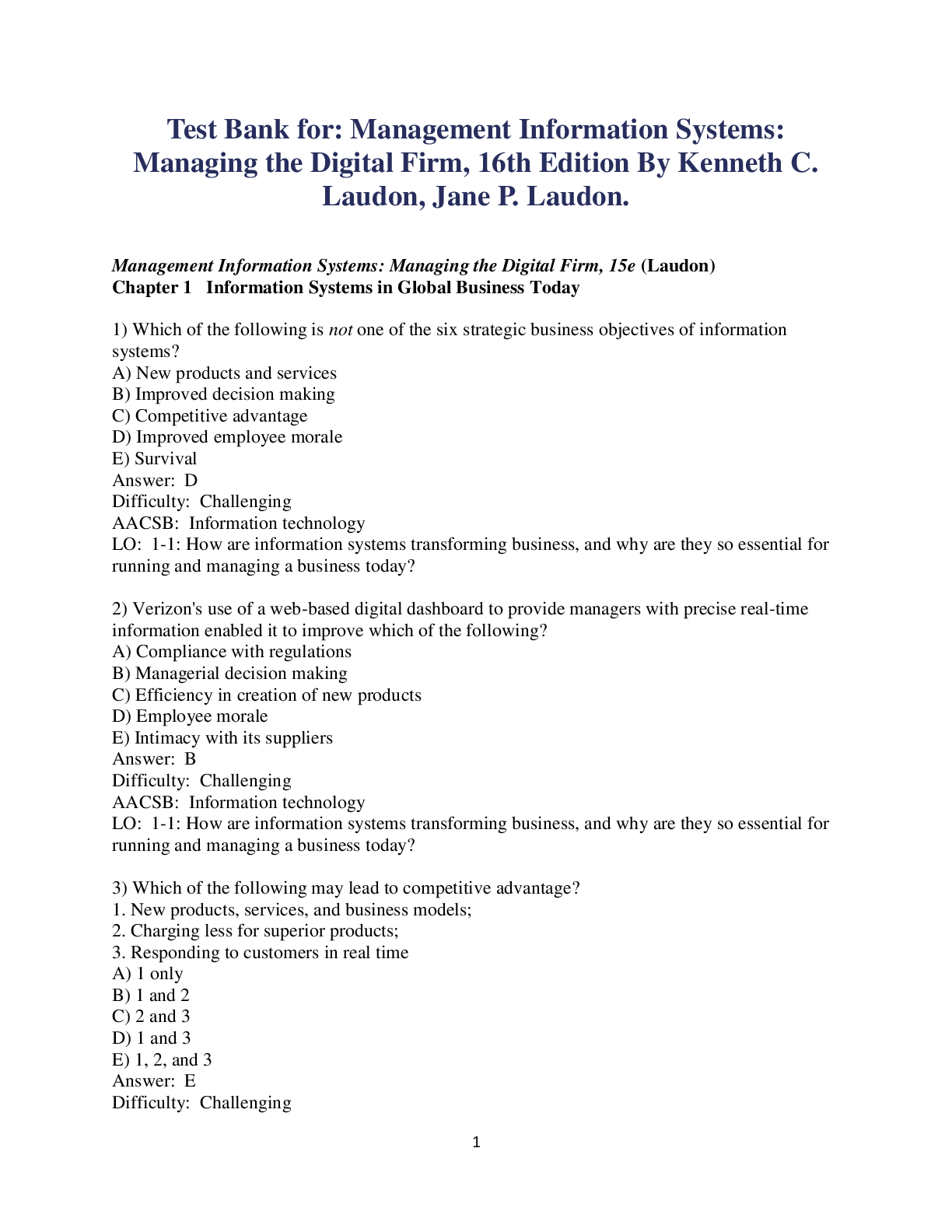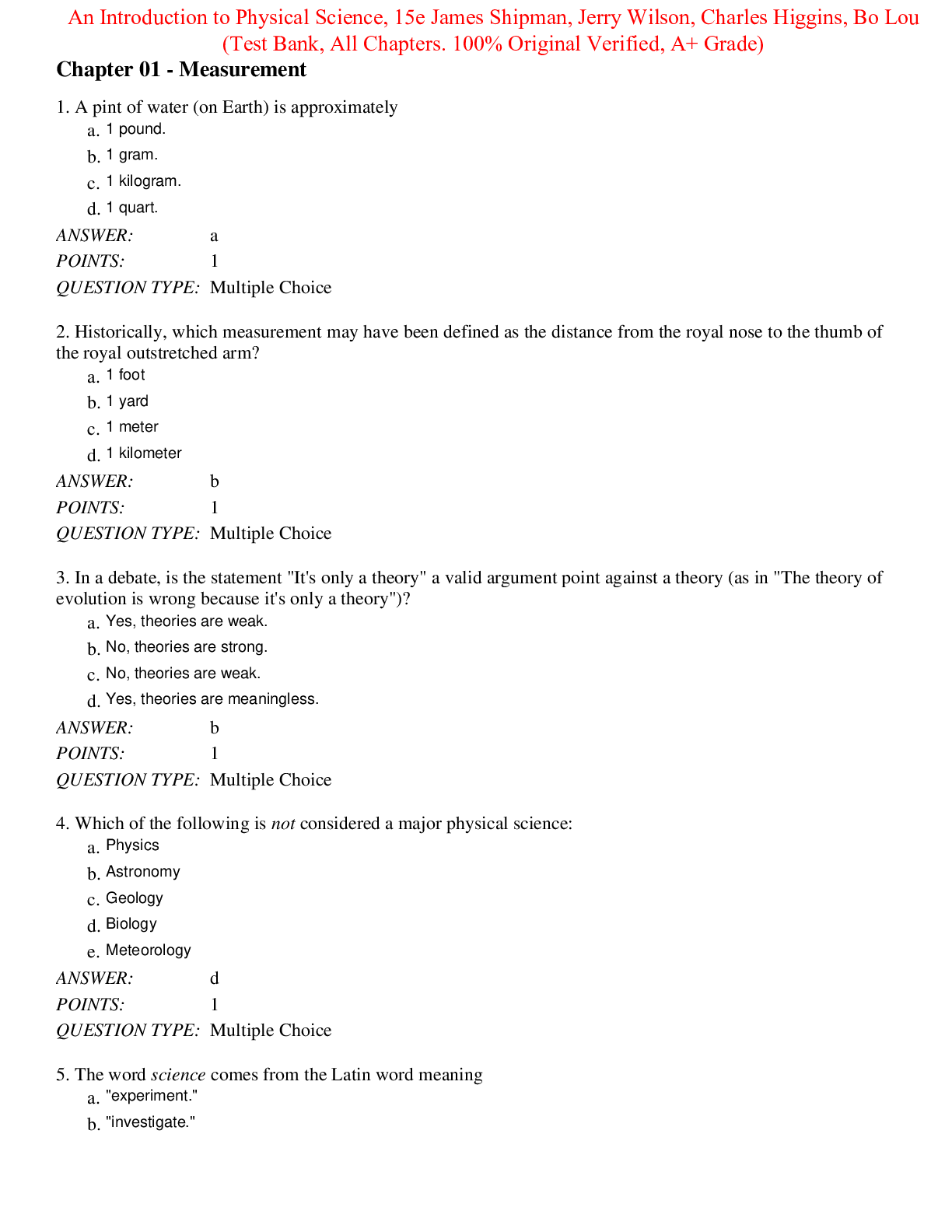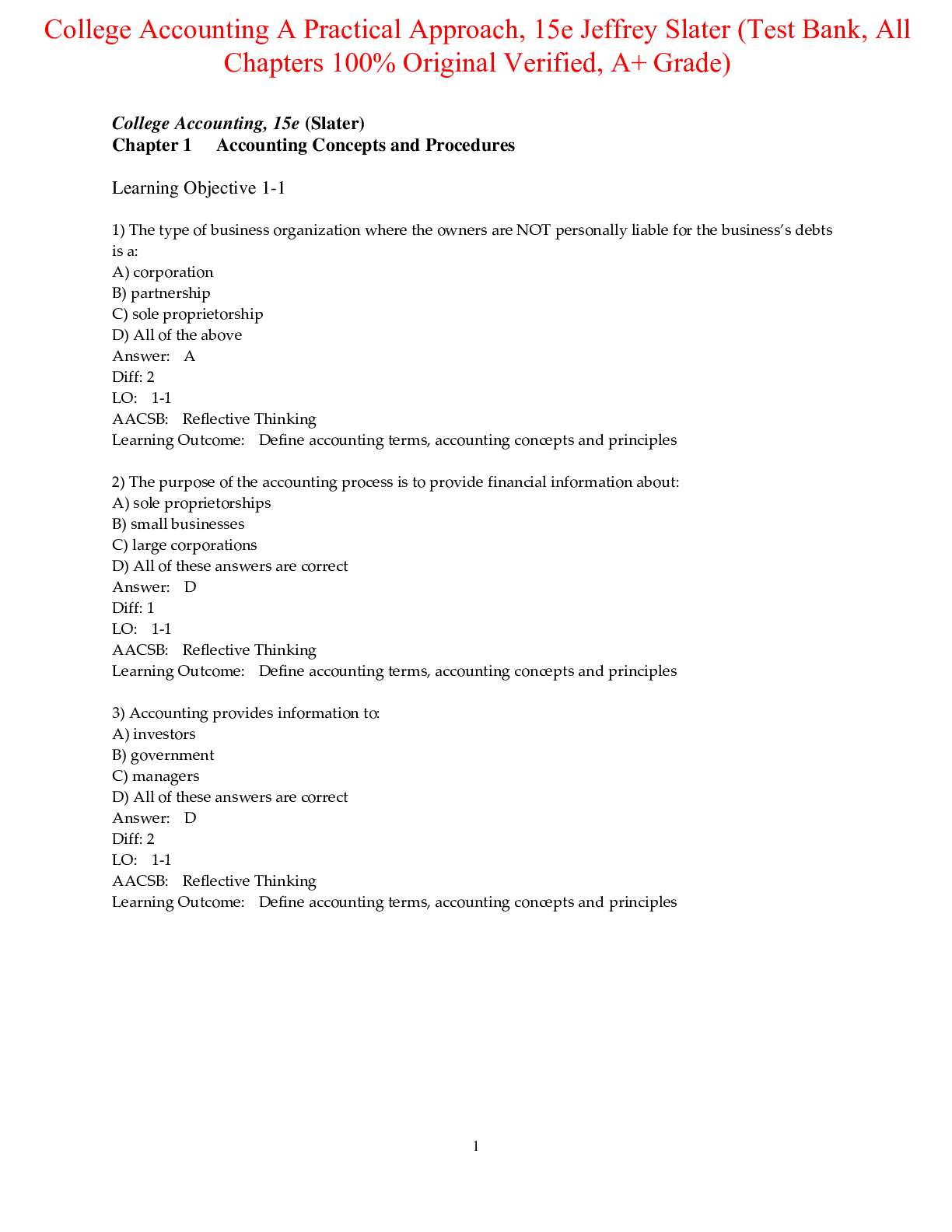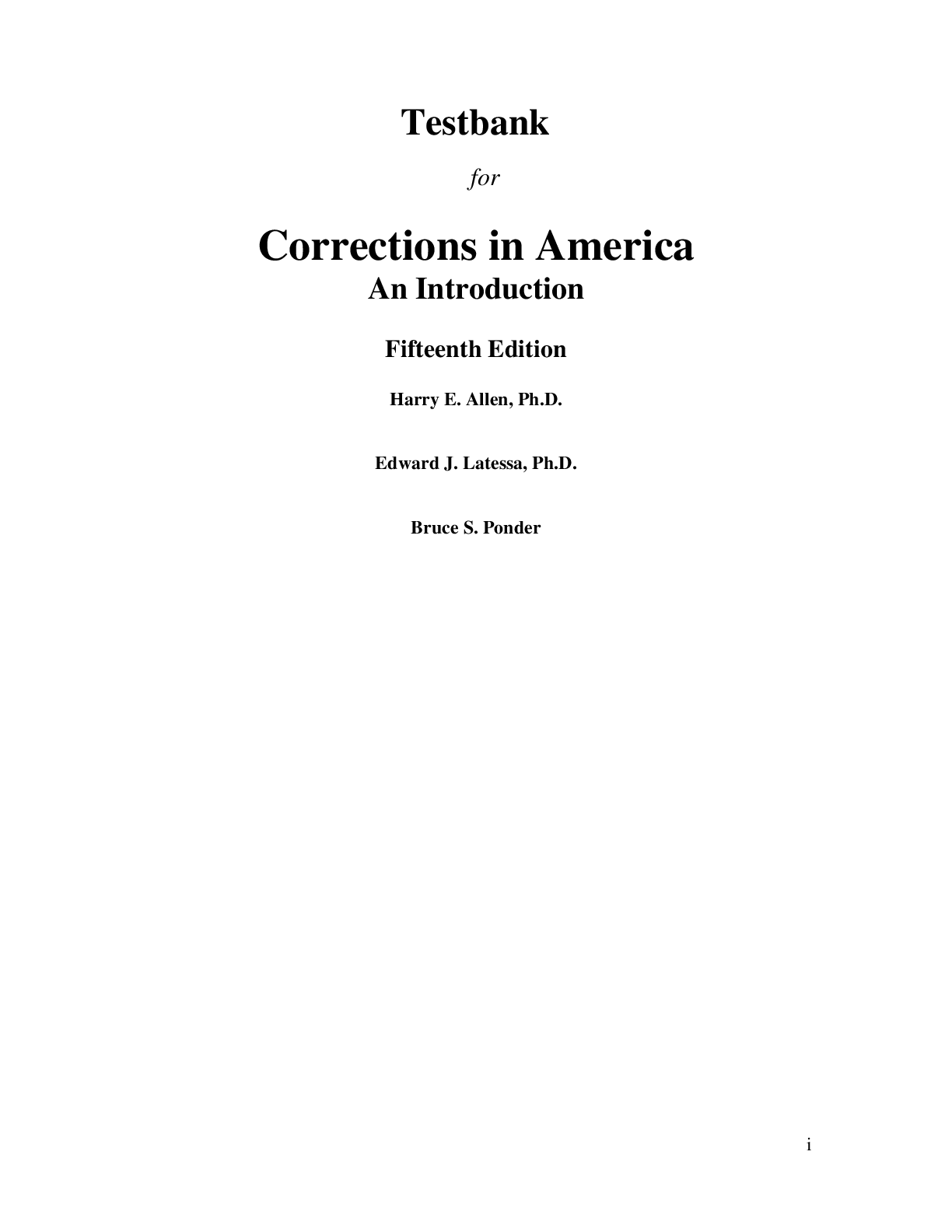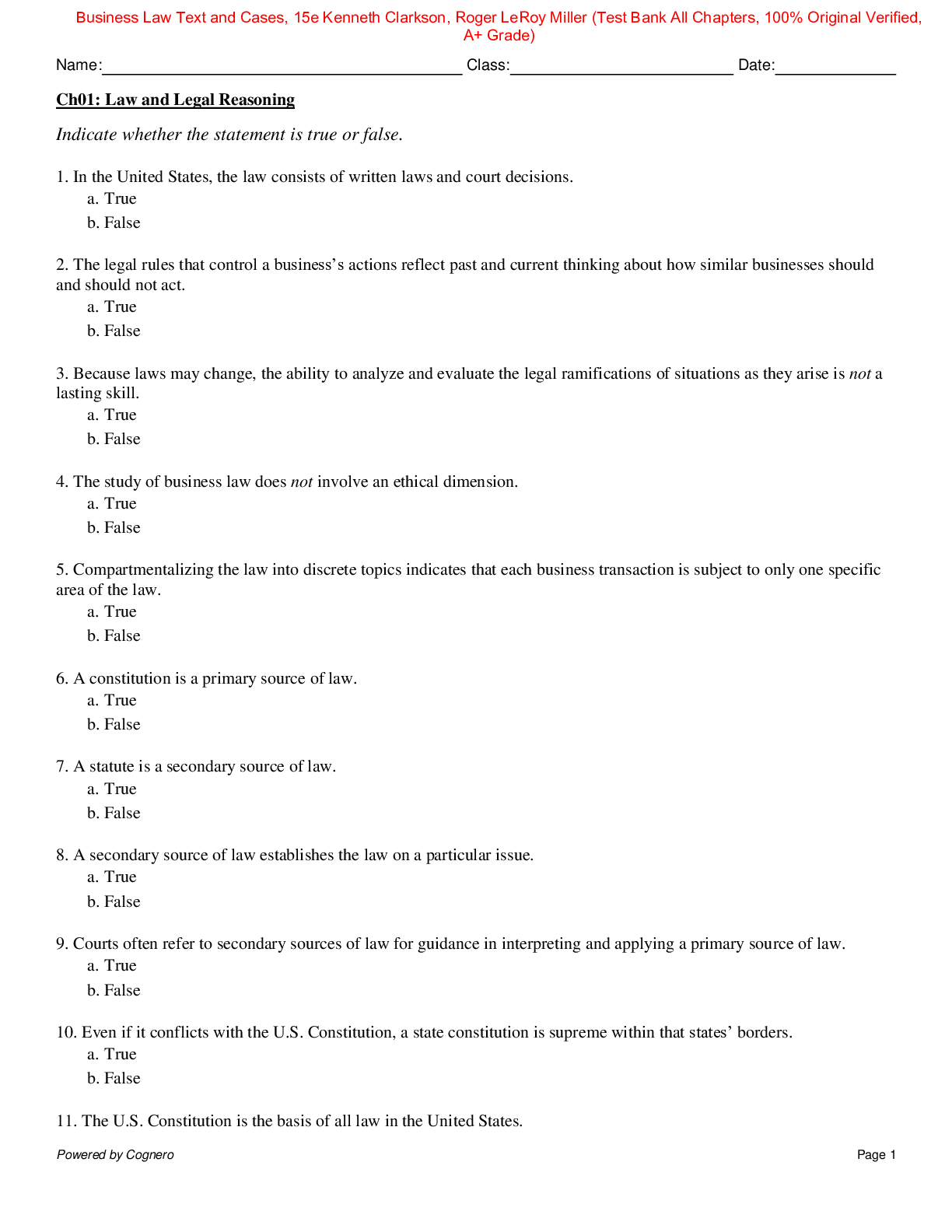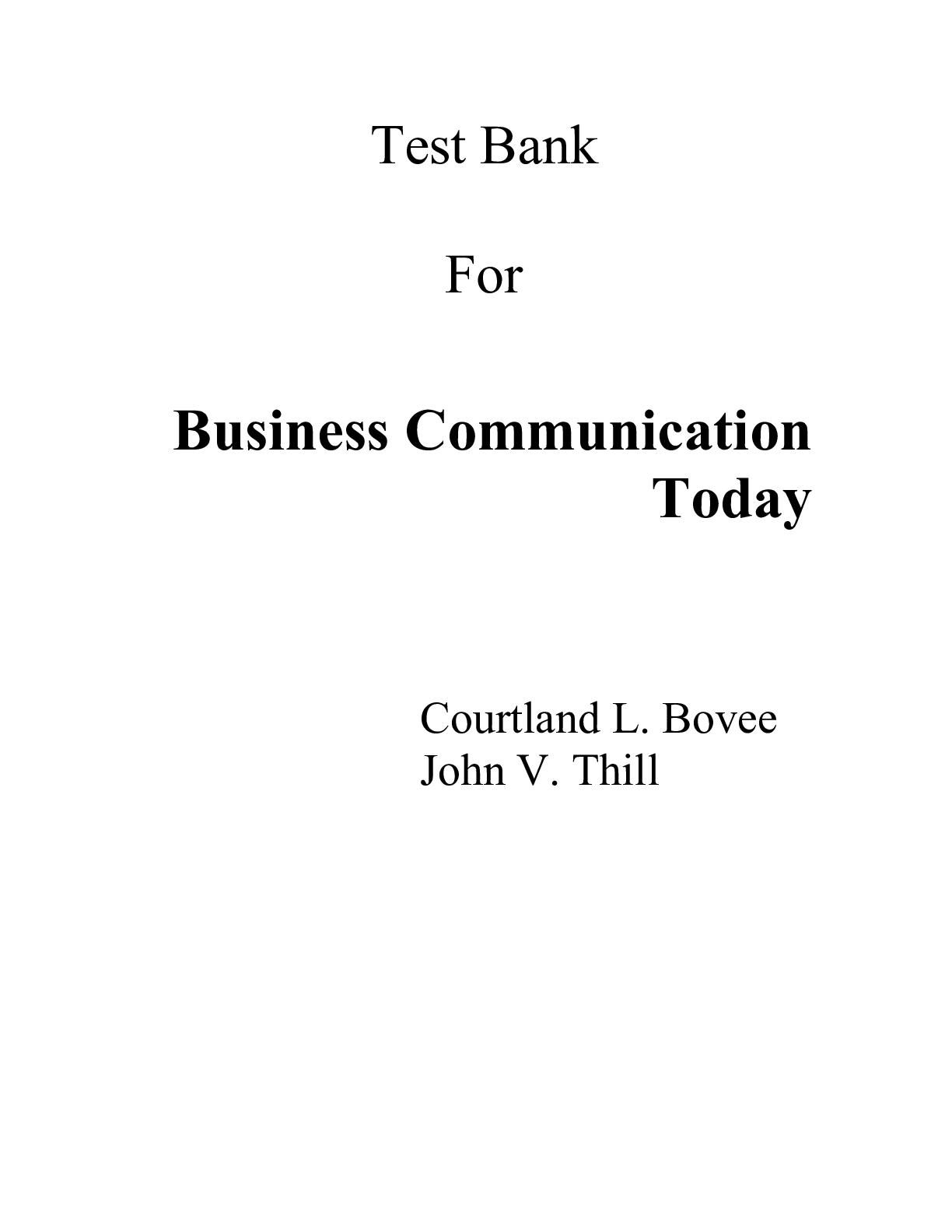Social Sciences > TEST BANK > Hill's Chemistry for Changing Times, 15th edition By John W. Hill, Terry W. McCreary, Marilyn D. Due (All)
Hill's Chemistry for Changing Times, 15th edition By John W. Hill, Terry W. McCreary, Marilyn D. Duerst, Rill Reuter (Test Bank)
Document Content and Description Below
1. Chemistry 1.1 Science and Technology: The Roots of Knowledge 1.2 Science: Reproducible, Testable, Tentative, Predictive, and Explanatory 1.3 Science and Technology: Risks and Benefit 1.4 Solv... ing Society's Problems: Scientific Research 1.5 Chemistry: A Study of Matter and Its Changes 1.6 Classification of Matter 1.7 The Measurement of Matter 1.8 Density 1.9 Energy: Heat and Temperature 1.10 Critical Thinking 2. Atoms 2.1 Atoms: Ideas from the Ancient Greeks 2.2 Scientific Laws: Conservation of Mass and Definite Proportions 2.3 John Dalton and the Atomic Theory of Matter 2.4 The Mole and Molar Mass 2.5 Mendeleev and the Periodic Table 2.6 Atoms and Molecules: Real and Relevant 3. Atomic Structure 3.1 Electricity and the Atom 3.2 Serendipity in Science: X-Rays and Radioactivity 3.3 Three Types of Radioactivity 3.4 Rutherford's Experiment: The Nuclear Model of the Atom 3.5 The Atomic Nucleus 3.6 Electron Arrangement: The Bohr Model (Orbits) 3.7 Electron Arrangement: The Quantum Model (Orbitals/Subshells) 3.8 Electron Configurations and the Periodic Table 4. Chemical Bonds 4.1 The Art of Deduction: Stable Electron Configurations 4.2 Lewis (Electron-Dot) Symbols 4.3 The Reaction of Sodium with Chlorine 4.4 Using Lewis Symbols for Ionic Compounds 4.5 Formulas and Names of Binary Ionic Compounds 4.6 Covalent Bonds: Shared Electron Pairs 4.7 Unequal Sharing: Polar Covalent Bonds 4.8 Polyatomic Molecules: Water, Ammonia, and Methane 4.9 Polyatomic Ions 4.10 Guidelines for Drawing Lewis Structures 4.11 Molecular Shapes: The VSEPR Theory 4.12 Shapes and Properties: Polar and Nonpolar Molecules 5. Chemical Accounting 5.1 Chemical Sentences: Equations 5.2 Volume Relationships in chemical Equations 5.3 Avogadro's Number and the Names 5.4 Molar Mass: Mole-to-Mass and Mass-to-Mole Conversions 5.5 Solutions 6. Gases, Liquids, Solids…and Intermolecular Forces 6.1 Solids, Liquids, and Gases 6.2 Comparing Ionic and Molecular Substances 6.3 Forces between Molecules 6.4 Forces in Solutions 6.5 Gases: The Kinetic-Molecular Theory 6.6 The Simple Gas Laws 6.7 The Ideal Gas Law 7. Acids and Bases 7.1 Acids and Bases: Experimental Definitions 7.2 Acids, Bases, and Salts 7.3 Acidic and Basic Anhydrides 7.4 Strong and Weak Acids and Bases 7.5 Neutralization 7.6 The pH Scale 7.7 Buffers and Conjugate Acid-Base Pairs 7.8 Acids and Bases in Industry and in Daily Life 8. Oxidation and Reduction 8.1 Oxidation and Reduction: Four Views 8.2 Oxidizing and Reducing Agents 8.3 Electrochemistry: Cells and Batteries 8.4 Corrosion and Explosion 8.5 Oxygen: An Abundant and Essential Oxidizing Agent 8.6 Some Common Reducing Agents 8.7 Oxidation, Reduction, and Living Things 9. Organic Chemistry 9.1 Organic Chemistry and Compounds 9.2 Aliphatic Hydrocarbons 9.3 Aromatic Compounds: Benzene and Its Relatives 9.4 Halogenated Hydrocarbons: Many Uses, Some Hazards 9.5 Functional and Alkyl Groups 9.6 Alcohols, Phenols, Ethers, and Thiols 9.7 Aldehydes and Ketones 9.8 Carboxylic Acids and Esters 9.9 Nitrogen-Containing Compounds: Amines and Amides 10. Polymers 10.1 Polymerization: Making Big Ones Out of Little Ones 10.2 Polyethylene: From the Battle of Britain to Bread Bags 10.3 Addition Polymerization: One + One + One + … Gives One! 10.4 Rubber and Other Elastomers 10.5 Condensation Polymers 10.6 Properties of Polymers 10.7 Plastics and the Environment 11. Nuclear Chemistry 11.1 Natural Radioactivity 11.2 Nuclear Equations 11.3 Half-Life and Radioisotopic Dating 11.4 Artificial Transmutation 11.5 Uses of Radioisotopes 11.6 Penetrating Power of Radiation 11.7 Energy from the Nucleus 11.8 Nuclear Bombs 11.9 Uses and Consequences of Nuclear Energy 12. Chemistry of Earth 12.1 Spaceship Earth: Structure and Composition 12.2 Silicates and the Shapes of Things 12.3 Carbonates: Caves, Chalk, and Limestone 12.4 Metals and Their Ores 12.5 Salts and "Table Salt" 12.6 Gemstones and Semi-Precious Stones 12.7 Earth's Dwindling Resources 13. Air 13.1 Earth's Atmosphere: Divisions and Composition 13.2 Chemistry of the Atmosphere 13.3 Pollution through the Ages 13.4 Automobile Emissions 13.5 Photochemical Smog: Making Haze While the Sun Shines 13.6 Acid Rain: Air Pollution Water Pollution 13.7 The Inside Story: Indoor Air Pollution 13.8 Stratospheric Ozone: Earth's Vital Shield 13.9 Carbon Dioxide and Climate Change 13.10 Who Pollutes? Who Pays? 14. Water 14.1 Water: Some Unique Properties 14.2 Water in Nature 14.3 Organic Contamination; Human and Animal Waste 14.4 The World's Water Crisis 14.5 Tap Water and Government Standards for Drinking Water 14.6 Water Consumption: Who Uses It and How Much? 14.7 Making Water Fit to Drink 14.8 Wastewater Treatment 15. Energy 15.1 Our Sun, a Giant Nuclear Power Plant 15.2 Energy and Chemical Reactions 15.3 Reaction Rates 15.4 The Laws of Thermodynamics 15.5 Fuels and Energy: People, Horses, and Fossils 15.6 Coal: The Carbon Rock of Ages 15.7 Natural Gas and Petroleum 15.8 Convenient Energy 15.9 Nuclear Energy 15.10 Renewable Energy Sources 16. Biochemistry 16.1 Energy and the Living Cell 16.2 Carbohydrates: A Storehouse of Energy 16.3 Carbohydrates in the Diet 16.4 Fats and Other Lipids 16.5 Fats and Cholesterol 16.6 Proteins: Polymers of Amino Acids 16.7 Structure and Function of Proteins 16.8 Protein in the Diet 16.9 Nucleic Acids: Parts, Structure, and Function 16.10 RNA: Protein Synthesis and the Genetic Code 16.11 The Human Genome 17. Nutrition, Fitness, and Health 17.1 Calories: Quality and Quantity 17.2 Minerals 17.3 Vitamins 17.4 Fiber, Electrolytes, and Water 17.5 Food Additives 17.6 Starvation and Malnutrition 17.7 Weight Loss, Diet, and Exercise 17.8 Fitness and Muscle 18. Drugs 18.1 Drugs from Nature and the Laboratory 18.2 Pain Relievers: From Aspirin to Oxycodone 18.3 Drugs and Infectious Diseases 18.4 Chemicals against Cancer 18.5 Hormones: The Regulators 18.6 Drugs for the Heart 18.7 Drugs and the Mind 18.8 Drugs and Society 19. Chemistry Down on the Farm 19.1 Growing Food with Fertilizers 19.2 The War against Pests 19.3 Herbicides and Defoliants 19.4 Sustainable Agriculture 19.5 Looking to the Future: Feeding a Growing, Hungry World 20. Household Chemicals 20.1 Cleaning with Soap 20.2 Synthetic Detergents 20.3 Laundry Auxiliaries: Softeners and Bleaches 20.4 All-Purpose and Special-Purpose Cleaning Products 20.5 Solvents, Paints, and Waxes 20.6 Cosmetics: Personal-Care Chemicals 21. Poisons 21.1 Natural Poisons 21.2 Poisons and How They Act 21.3 More Chemistry of the Nervous System 21.4 The Lethal Dose 21.5 The Liver as a Detox Facility 21.6 Carcinogens and Teratogens 21.7 Hazardous Wastes [Show More]
Last updated: 1 year ago
Preview 1 out of 437 pages
Instant download

Instant download
Reviews( 0 )
Document information
Connected school, study & course
About the document
Uploaded On
Nov 01, 2022
Number of pages
437
Written in
Additional information
This document has been written for:
Uploaded
Nov 01, 2022
Downloads
0
Views
70


.png)


.png)

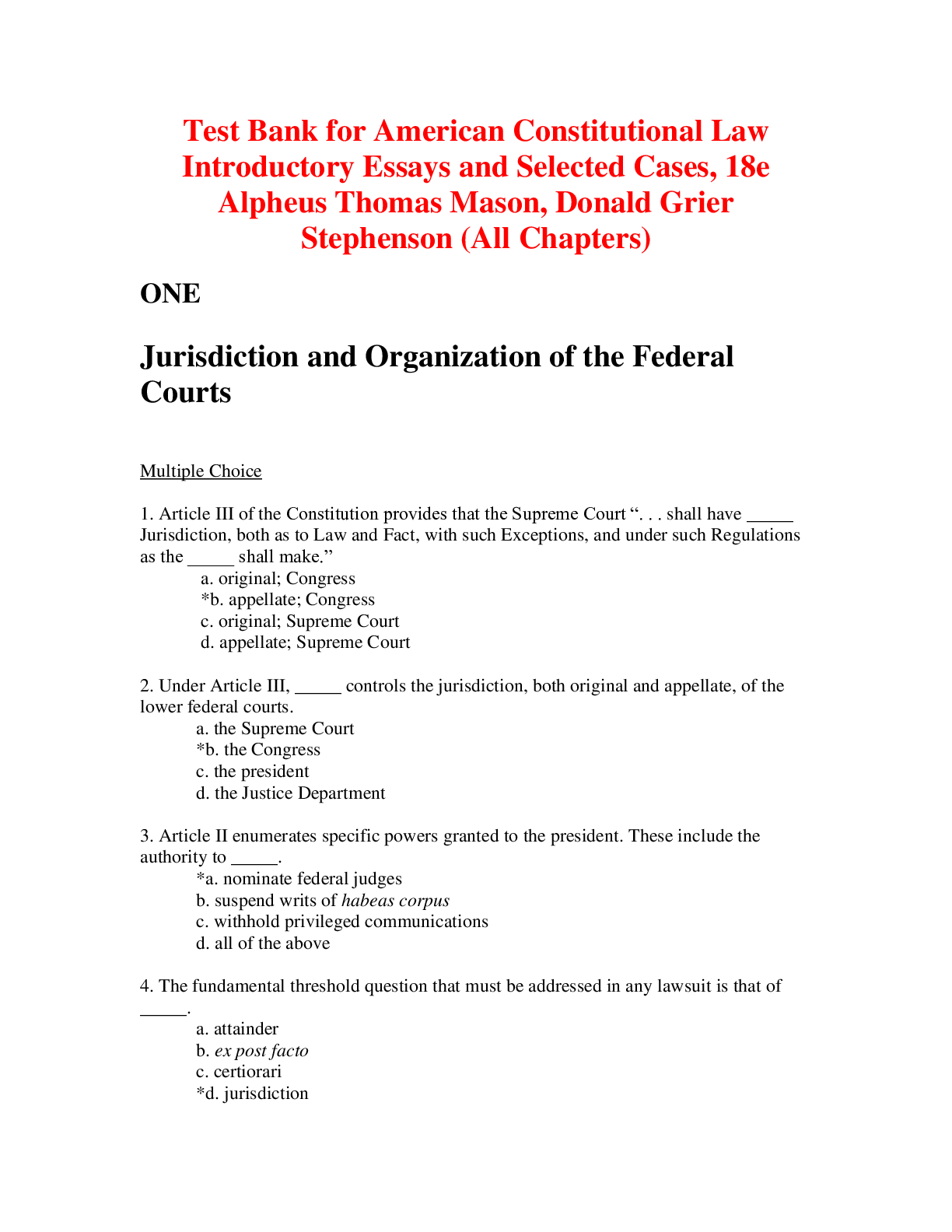


, 10e David Shi, George Brown Tindall.png)

.png)

